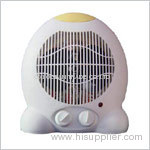Product (133)
-
ELECTRIC MOTOR
(9)
- STEP MOTOR (2)
- SYNCHRONOUS MOTOR (7)
-
PCB
(10)
- PCB OF ELECTRIC FAN (10)
- MOTOR SHAFT (8)
- ELECTRONIC BALLASTS (12)
-
Plastic Pallets
(56)
- Nestable Plastic Pallets (16)
- Rackable Pallets (8)
- Heavy Duty Pallets (15)
- Stackable Pallets (17)
-
plastic filament
(20)
- PP Monofilaments (12)
- Pet Monofilaments (8)
- lead acid battery (17)
- Others (1)
Blog (8)
Credit Report
Products Index
Company Info
Cixi Ocean Trade Co., Ltd. [China (Mainland)]
Business Type:Manufacturer, Trading Company
City: Ningbo
Province/State: Zhejiang
Country/Region: China (Mainland)
Blog
Fan heater Cost and efficiency

A FAN HEATER is a heater that works by using a fan to pass air over a heating element. This heats up the air, which then leaves the heater, warming up the surrounding room. They can heat an enclosed space such as a room faster than a heater without fan, but, like any fan, make noise.
Cost and efficiency
Electric fan heaters can be less expensive to buy than other heaters, as the fan carries heat away from the device, which can be made smaller without overheating. The relatively small amount of electricity used to turn the fan is converted to additional heat, so that efficiency is not a problem: all heaters, including fan heaters, without external ventilation are 100% efficient, meaning that all energy input goes into the room as heat. However their main downside is that electric fan heaters are significantly more expensive to run than fuel powered heaters due to the cost of electricity. This makes them best suited to occasional use rather than as regularly used heat sources.
Control
Most modern fan heaters have a power setting to determine power output. Some also have a thermostat which switches off heating when the desired ambient temperature is reached. They do not maintain perfect room temperature control, since
1.the thermostat is usually attached to the body of the heater, and senses temperature there.
2.the basic bimetal thermostats usually used have significant hysteresis.
3.Remote sensors and thermostats with less hysteresis are available but are less common, as they are more expensive and the basic fan heater is satisfactory for most purposes.
Pre Page:
Fan heater internal parts and safety
Next Page:
Halogen Heaters-Save Money



